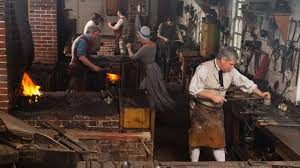Feb. 1 – January Home Reading Logs Due
Feb. 2 – Social Studies Unit 4 District Common Assessment
Remember that on any given day your fifth grader should be able to tell you what we did in school. The planner is a good reminder for them to help with this narrative. Sharing what they have learned each day is an excellent way to help students review.
The planner should be signed by a parent or guardian every day.
Homework might not always be a worksheet!!!!!
**Students should be working on multiplication facts every night.
**They should be working on Spelling City 10-15 minutes per night Monday – Thursday.
**Students should be reading 30 minutes each night. Their comprehension can be checked using the question sheet given to parents at conferences.
**Moby Max or Khan Academy- at least 20 minutes should be done each night.
**Students can use Ducksters or History.com to review social studies and/or science topics covered in class.
**Students will have assignments which need to be completed on Readworks.
**Content binders should come home every night so students can study and review that day’s lessons.
Math, social studies and science material in the binder should be studied each night to prepare for upcoming tests.
Math Unit 8-
In this unit, students will review the concept of renaming fractions and begin formal work of adding and subtraction fractions with uncommon denominators. They will be introduced to various strategies to multiply fractions and mixed numbers. They will be introduced to division of fractions with visual models and interpret the reasonableness of their answers through visual models.
Social Studies-
**Unit Test Feb. 2!!!
We begin our study of Unit 4:
**In this unit students examine the economic and political developments in the colonies prior to the end of the French and Indian War and assess how these developments affected life in the colonies. After reviewing the three colonial regions, students focus on the economic attributes of the colonies. They take an in-depth look at the Triangular Trade routes, including the Middle Passage, and its consequence for both continents. Students then explore the colonial labor force, noting differences between the New England and Southern colonies, and comparing the life of enslaved Africans and free Africans in the American colonies. Emphasis is placed on the effect of “one-crop economies” (plantation grown staple crops) in the south, and its influence on various groups of people and daily life in the Southern colonies. Students then shift their focus to New England and the Middle colonies, examining the diversity of economic activities and its affect on daily life in each region. Next, students investigate how colonial political experiences during the first half of the 18th Century influenced colonists’ views of their political rights and responsibilities. In doing so, they explore the shift of power from royal appointed governors to colonial representative assemblies and their influences on colonial life. Throughout the unit, students consider life in the British colonies from the perspectives of different groups of people including women, wealthy landowners, indentured servants, American Indians, free Africans, and enslaved Africans. Students explore how Africans living in North America drew upon their African past and adapted elements of new cultures to develop a distinct African-American culture. By the end of the unit, students construct generalizations about the reasons for regional differences in colonial America.
Science
Dynamics of the Solar System
This earth science unit reinforces and extends the study of the sun, moon, and earth to objects within the solar system. Students explore the seasons and their relationship to the tilt of the earth on its axis and revolution around the sun. They define a year as one revolution around the sun. Students study the solar system and describe the position, motion, and relationship of the planets and other objects in the sky to the sun. They investigate the position of the moon in its orbit and it’s phases. Students observe and explain the apparent motion of the sun, moon and constellations across the sky due to the earth’s rotation and revolution. They study lunar and solar eclipses based on the relative positions of the sun, moon, and earth. Students relate ocean tides to the gravitational pull and orbit of the moon. They apply their knowledge of objects in the sky through various charts, illustrations, and models.
Writing– Students continue conferring with their teacher regarding adjustment of their goals and projects. Stamina and independence continue to be emphasized as students strengthen their literacy skills. Students will use the writing process to construct compare/contrast pieces.
Reading-
*Fiction-We are continuing a genre study of Mystery novels while we also continue to strengthen our Daily 5 routine.

*Non-fiction- We will begin working on the skill of identifying the central/main idea in a non-fiction piece.
Grammar – We will be learning about quotation marks and their proper usage in dialogue.
Spelling – Please see Spelling City for the current spelling list and activities.






Leave a Reply